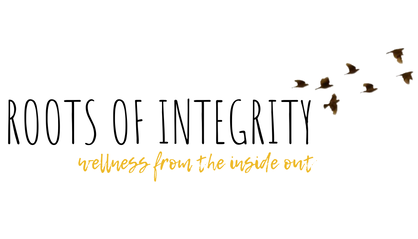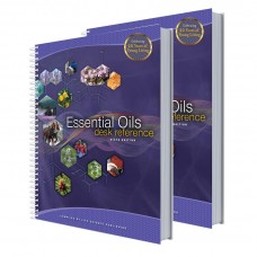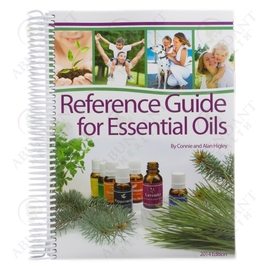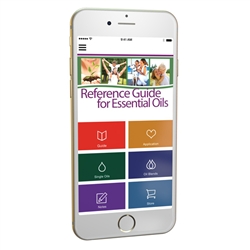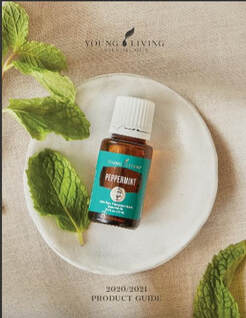Young Living | Integrity
From Seed to Seal. Real farms, real people... true integrity. The World Leader in Essential Oils.
Check out our YouTube videos below, or visit our YouTube Channel!
Usage FAQ's
(via Young Living's EO Safety page. See original page here)
Essential oils are potent gifts from nature that can often be more powerful than expected. In order to prevent misuse of these precious oils and ensure their maximum benefit, Young Living Founder and CEO D. Gary Young, working with Director of Global Education and Health Sciences Dr. Lindsey Elmore and other product experts on her team, has created this helpful safety guide. Refer to it to learn the basics of essential oil use, how to handle skin sensitivity, and other valuable information.
1. I’m new to essential oils. How are they used? – Each bottle of Young Living essential oil is labeled with directions for how that oil can be used, and these directions vary based on location. Please consult with the product label for appropriate use directions.
2. I see the term “carrier oil” used in several places. What is a carrier oil, what does it do, and why should I use it? – A carrier oil is a vegetable oil such as coconut oil or grapeseed oil that can be used to dilute EO. YL V-6 Vegetable Oil Complex is an excellent carrier oil for all applications. Carrier oils ensure that EOs applied topically are comfortable. Dilution with a carrier oil does not dilute the effect of the EO, and prevents waste due to excessive application. Vegetable shortening, butter, margarine or petroleum derivatives (petrolatum jelly) should never be used as carrier oils. Some consumers choose to avoid olive oil as a carrier oil because of its strong aroma and thick viscosity.
3. What is a hot oil? – “Hot oils” are oils that, when applied to the skin, can cause a hot or burning sensation. YL recommends using a patch test procedure prior to first use. To perform a patch test, apply 1-2 drops of EO to a patch of skin such as the forearm. Observe that area of skin over the course of 1-2 hours for any noticeable reaction; usually reactions occur within 5-10 minutes. If you experience a hot or burning sensation or if you develop a rash, add V-6 carrier oil to the affected area as often as needed. Examples of “hot” oils include cinnamon, clove, lemongrass, peppermint, oregano, thyme, Exodus II, and Thieves.
4. What if I experience skin discomfort or irritation? – If discomfort or irritation occurs, stop using the EO, and apply V-6 or other carrier oil to the affected area. Never use water in an attempt to flush the oil off the skin, as this may increase discomfort. If a rash occurs this may be a sign of detoxification; drink adequate water to encourage the release and removal of body toxins. Toxins present in petrochemical based soaps and skin care products, detergents and perfumes may trigger some of the detoxification reactions. Consider discontinuation of these agents if a reaction occurs. Before using the EO again, perform a patch test (see above) and dilute with carrier oil as needed. Water drives oil into the skin and the eyes. If EO gets in your eye, flush with V-6 carrier oil to alleviate any discomfort. Discomfort should be alleviated within minutes. If eye discomfort does not subside within 5 minutes, please seek medical attention. Be aware that some documents suggest diluting the oil with water. YL suggests that you dilute with carrier oil to ensure that discomfort is alleviated as quickly as possible.
5. Can essential oils be applied to sensitive areas? – YL recommends that you avoid contact with EOs and sensitive areas such as eyes, ears, genitals and mucous membranes. If you choose to use the oil in any sensitive area, dilute 1 drop of the essential oil to 5-10 drops of V-6 carrier oil.
6. How often can essential oils be applied? How much do I use? – Proper usage is indicated on each EO label. Please follow label instructions. The idea of “if a little is good, a lot is better” is not always correct. Essential oils are very potent and powerful– start low and go slow. In most cases 1-2 drops are adequate and using more may waste product. Depending on the EO you can gradually build up to 3-4 uses per day if desired. Excessive use of essential oils may increase the risk for adverse reactions.
7. Can essential oils be used during pregnancy or while nursing? – As with any medical condition it is strongly recommended that, prior to use of essential oils, you seek the advice and recommendation of a competent, trained health care advisor who is experienced in EO usage. It is generally recommended to avoid overuse and excessive use of Clary Sage (Salvia sclarea), Sage (Salvia officinalis), Tansy (Tanacetum vulgare), Hyssop (Hyssopus officinalis), Fennel (Foeniculum vulgare), and Wintergreen (Gaultheria procumbens) as well as the blends and supplements that contain these oils.
8. Can essential oils be used on children? – Many EOs are appropriate for use with children, and they should be diluted prior to use. Some YL products are pre-diluted with carrier oil as indicated on product label and are intended for direct application on children. Children generally respond well to EO, and use of a carrier oil is recommended. One-2 drops of EO such as SleepyIze, RutaVala, Gentle Baby and Peace & Calming may be diluted in carrier oil and applied to the bottom of the feet.
9. How does exposure to sun affect essential oil use? – Some EOs, especially citrus oils, contain natural molecules that react with sunlight (UV light) and cause a sensitivity reaction. All YL EOs and oil blends that contain these compounds are labeled with a warning to avoid sun/UV light for 12 to 48 hours after applying. Caution should always be used when starting to use a new oil: use patch testing (see above), dilute and apply the oil to skin that is protected from sun/UV exposure to reduce the risk of sensitivity. YL beauty and cosmetic products are formulated to remove sun-sensitizing agents to reduce the risk of sun sensitivity.
10. What about the use of essential oils if I have a medical condition? Can essential oils interact with prescription medications? – If you have a disease or medical condition, or if you are using a prescription medication, it is recommended that you consult with a health advisor who has experience with EOs prior to using an EO. Seek the advice of the prescribing physician and a pharmacist about potential interactions between the medication(s) and the essential oil(s).
(via Young Living's EO Safety page. See original page here)
Essential oils are potent gifts from nature that can often be more powerful than expected. In order to prevent misuse of these precious oils and ensure their maximum benefit, Young Living Founder and CEO D. Gary Young, working with Director of Global Education and Health Sciences Dr. Lindsey Elmore and other product experts on her team, has created this helpful safety guide. Refer to it to learn the basics of essential oil use, how to handle skin sensitivity, and other valuable information.
1. I’m new to essential oils. How are they used? – Each bottle of Young Living essential oil is labeled with directions for how that oil can be used, and these directions vary based on location. Please consult with the product label for appropriate use directions.
2. I see the term “carrier oil” used in several places. What is a carrier oil, what does it do, and why should I use it? – A carrier oil is a vegetable oil such as coconut oil or grapeseed oil that can be used to dilute EO. YL V-6 Vegetable Oil Complex is an excellent carrier oil for all applications. Carrier oils ensure that EOs applied topically are comfortable. Dilution with a carrier oil does not dilute the effect of the EO, and prevents waste due to excessive application. Vegetable shortening, butter, margarine or petroleum derivatives (petrolatum jelly) should never be used as carrier oils. Some consumers choose to avoid olive oil as a carrier oil because of its strong aroma and thick viscosity.
3. What is a hot oil? – “Hot oils” are oils that, when applied to the skin, can cause a hot or burning sensation. YL recommends using a patch test procedure prior to first use. To perform a patch test, apply 1-2 drops of EO to a patch of skin such as the forearm. Observe that area of skin over the course of 1-2 hours for any noticeable reaction; usually reactions occur within 5-10 minutes. If you experience a hot or burning sensation or if you develop a rash, add V-6 carrier oil to the affected area as often as needed. Examples of “hot” oils include cinnamon, clove, lemongrass, peppermint, oregano, thyme, Exodus II, and Thieves.
4. What if I experience skin discomfort or irritation? – If discomfort or irritation occurs, stop using the EO, and apply V-6 or other carrier oil to the affected area. Never use water in an attempt to flush the oil off the skin, as this may increase discomfort. If a rash occurs this may be a sign of detoxification; drink adequate water to encourage the release and removal of body toxins. Toxins present in petrochemical based soaps and skin care products, detergents and perfumes may trigger some of the detoxification reactions. Consider discontinuation of these agents if a reaction occurs. Before using the EO again, perform a patch test (see above) and dilute with carrier oil as needed. Water drives oil into the skin and the eyes. If EO gets in your eye, flush with V-6 carrier oil to alleviate any discomfort. Discomfort should be alleviated within minutes. If eye discomfort does not subside within 5 minutes, please seek medical attention. Be aware that some documents suggest diluting the oil with water. YL suggests that you dilute with carrier oil to ensure that discomfort is alleviated as quickly as possible.
5. Can essential oils be applied to sensitive areas? – YL recommends that you avoid contact with EOs and sensitive areas such as eyes, ears, genitals and mucous membranes. If you choose to use the oil in any sensitive area, dilute 1 drop of the essential oil to 5-10 drops of V-6 carrier oil.
6. How often can essential oils be applied? How much do I use? – Proper usage is indicated on each EO label. Please follow label instructions. The idea of “if a little is good, a lot is better” is not always correct. Essential oils are very potent and powerful– start low and go slow. In most cases 1-2 drops are adequate and using more may waste product. Depending on the EO you can gradually build up to 3-4 uses per day if desired. Excessive use of essential oils may increase the risk for adverse reactions.
7. Can essential oils be used during pregnancy or while nursing? – As with any medical condition it is strongly recommended that, prior to use of essential oils, you seek the advice and recommendation of a competent, trained health care advisor who is experienced in EO usage. It is generally recommended to avoid overuse and excessive use of Clary Sage (Salvia sclarea), Sage (Salvia officinalis), Tansy (Tanacetum vulgare), Hyssop (Hyssopus officinalis), Fennel (Foeniculum vulgare), and Wintergreen (Gaultheria procumbens) as well as the blends and supplements that contain these oils.
8. Can essential oils be used on children? – Many EOs are appropriate for use with children, and they should be diluted prior to use. Some YL products are pre-diluted with carrier oil as indicated on product label and are intended for direct application on children. Children generally respond well to EO, and use of a carrier oil is recommended. One-2 drops of EO such as SleepyIze, RutaVala, Gentle Baby and Peace & Calming may be diluted in carrier oil and applied to the bottom of the feet.
9. How does exposure to sun affect essential oil use? – Some EOs, especially citrus oils, contain natural molecules that react with sunlight (UV light) and cause a sensitivity reaction. All YL EOs and oil blends that contain these compounds are labeled with a warning to avoid sun/UV light for 12 to 48 hours after applying. Caution should always be used when starting to use a new oil: use patch testing (see above), dilute and apply the oil to skin that is protected from sun/UV exposure to reduce the risk of sensitivity. YL beauty and cosmetic products are formulated to remove sun-sensitizing agents to reduce the risk of sun sensitivity.
10. What about the use of essential oils if I have a medical condition? Can essential oils interact with prescription medications? – If you have a disease or medical condition, or if you are using a prescription medication, it is recommended that you consult with a health advisor who has experience with EOs prior to using an EO. Seek the advice of the prescribing physician and a pharmacist about potential interactions between the medication(s) and the essential oil(s).
